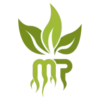Collard greens are native to the Eastern Mediterranean and Asia Minor. They have been cultivated for thousands of years and are a staple in Southern U.S. cuisine.
Harvest collard greens by picking the outer leaves first, leaving the inner leaves and growing point intact. Regular harvesting encourages continuous growth. Prune any yellow or damaged leaves to keep the plant healthy.
Harvest collard greens when the leaves are tender and have reached a suitable size. The best time to harvest is in the morning when the leaves are crisp and full of moisture. Cooler weather enhances the flavor, making them sweeter after a light frost.
General Prevention: To prevent pest infestations, practice crop rotation, ensure proper spacing for good air circulation, and water at the base of the plants to keep the leaves dry. Mulching around the plants can help retain moisture and reduce weed competition.
